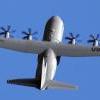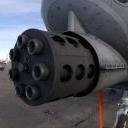Maybe it's a good thing for our overall effectiveness that so many pilots are getting out. IMO, sufficient talented guys/gals stay in for a full career, including command, to maintain adequate mentoring and leadership of the punks/FNGs. Pilots transitioning to the reserve component refresh the Guard/Reserve with the diverse experiences of different techniques and tactics found throughout active duty fighter squadrons.
Speaking from my own experience, the last decade and a half of stagnated airline hiring, plus the 10 year commitment, created an huge backlog of pilots who would have preferred a 6-8 year commitment but had nowhere to go except for the next PCS, especially considering many folks were (are) only 6-9 years from an AD retirement by the end of their commitment. Hence, very little attrition of 11Fs from AD and the cultivation of a poisonous "career" culture that's distracted us from focusing on killing the enemy. Not everyone can be the commander, but the Air Force is essentially forced to tell us that we can all make O-6 in order to keep us motivated (promotion, influence, pay, etc...).
The absolute best thing the Air Force could do is drop the 10 year commitment back to 6 or 8 years, with the implied understanding that many pilots will eventually transition to the ANG/AFRES, and promote the fact that AD is a great way to see the world, fly fighters full time for a couple of assignments, then transition to a second career in your early 30s (with the help of the 9/11 GI Bill) and continue to fly fighters in the ANG/AFRES. In the end, the AF essentially maintains its 11F experience level throughout all 3 components, AD becomes less backstabbing as the stakes of the "career game" begin to vanish, and the USAF maintains an equally effective fighter force at a much lower cost.
Flame away...








